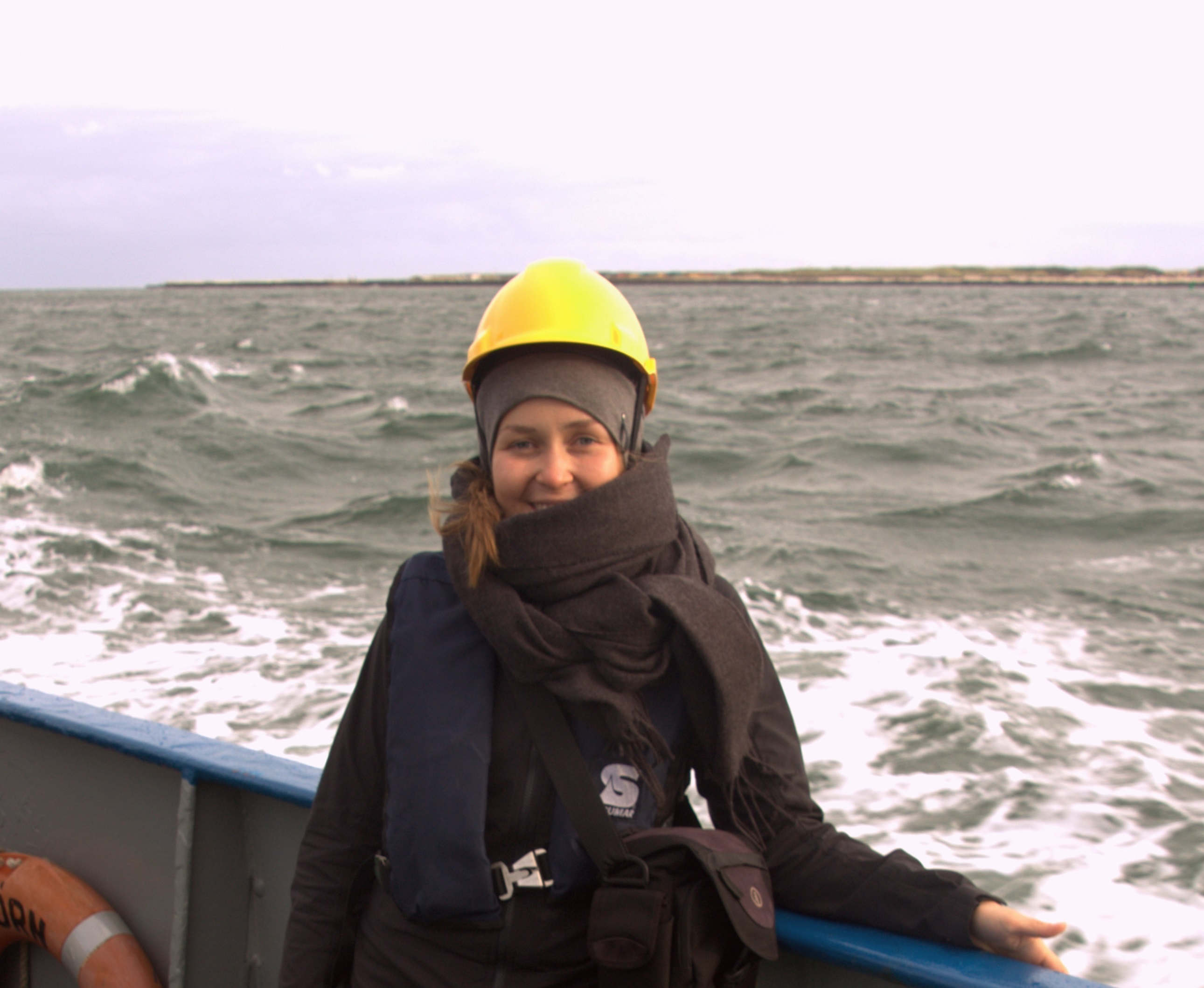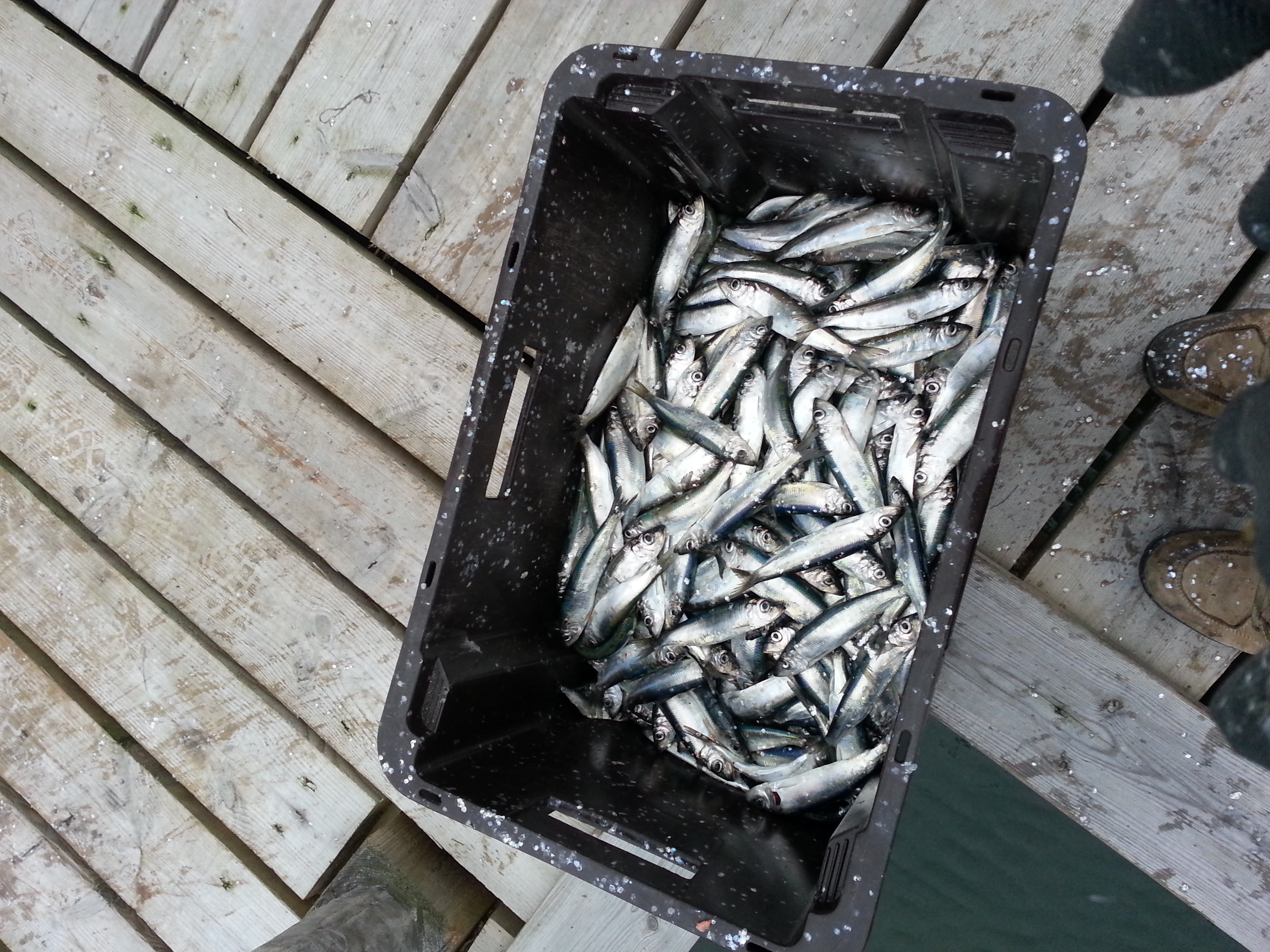 Kirjoittaja on jatko-opiskelija Turun yliopiston biologian laitoksella. Hän työskentelee Turun yliopiston Saaristomeren tutkimuslaitoksella tutkien siellä kerättyjä ympäristö-, plankton- ja silakka-aikasarjoja. Vapaa-ajan harrastuksiin kuuluu mm. ulkoilu, jooga ja matkustelu.
Kirjoittaja on jatko-opiskelija Turun yliopiston biologian laitoksella. Hän työskentelee Turun yliopiston Saaristomeren tutkimuslaitoksella tutkien siellä kerättyjä ympäristö-, plankton- ja silakka-aikasarjoja. Vapaa-ajan harrastuksiin kuuluu mm. ulkoilu, jooga ja matkustelu.
Katja Mäkinen is a Phd student in the Biology section in the University of Turku. She works in the Archipelago Research Institute of the University of Turku, studying decadal environmental time series on hydrography, plankton and herring. Free-time activities include e.g. outdoors, yoga and traveling.
Jättisilakoista pieniksi ja laihoiksi – mitä pitkäaikainen ympäristön seuranta kertoo meille ekosysteemimuutoksista?
Keväisin Saaristomeren silakka (Clupea harengus membras) vaeltaa Selkämeren avovesialueilta Saaristomeren sisäosiin kutemaan. Osa näistä silakan kutualueista sijaitsee Airistolla, joka sijaitsee Turun ja Turun yliopiston Saaristomeren tutkimuslaitoksen Seilin kenttäaseman lähistöllä. 1980-luvulta lähtien Seilissä on tutkittu Saaristomerellä kutevia silakoita Selkämereltä yhteistyössä ammattikalastajien kanssa kerätyistä näytteistä. Silakka on yhdessä kilohailin kanssa Pohjois-Itämeren tärkeimpiä kaupallisia kalalajeja. Se on myös keskeinen osa Pohjois-Itämeren ekosysteemiä, sillä se on yksi vallitsevista planktivoreista. Laji saalistaa valikoivasti suosien ravintonaan pääasiassa suurikokoisia hankajalkaislajeja kuten esimerkiksi mereistä hankajalkaislajia Pseudocalanus sp. Osittain tämän vuoksi Saaristomeren tutkimuslaitos on kerännyt myös eläinplanktonnäytteitä 1960-luvun lopulta lähtien, jonka tuloksena laitoksella on nykyään maailmanlaajuisestikin merkittävä, melkein 50 vuotta pitkä aikasarja.

Saaristomereltä tutkimuksia varten kerättyä silakkaa.
Saaristomerellä vuosikymmeniä kalastaneet henkilöt ovat varmasti huomanneet muutoksia silakan ulkomuodossa, jotka havaitaan myös tutkimuslaitoksen silakkaa koskevassa aikasarjassa. Vain 30–40 vuotta sitten Saaristomerellä lisääntyvät silakat olivat suurikokoisempia ja lihavampia kuin nykyään – silakan keskikoko ja rasvapitoisuus on pienentynyt viimeisten vuosikymmenien aikana. Pitkäaikaisen ympäristöseurannan ansiosta tiedämme, että muutokset johtuvat meriveden suolapitoisuudessa, lämpötilassa ja eläinplanktonyhteisössä tapahtuneista muutoksista. Nämä muutokset linkittyvät myös laajempiin ekosysteemilaajuisiin muutoksiin, jotka puolestaan johtuvat ilmastonmuutoksesta ja ihmisen toiminnasta, kuten kuhan (Gadus morhua) ylikalastuksesta.
Airistolta tänään kerättävä vesinäyte näyttäisi noin 5-6 suolapitoisuutta ollen pinnassa makeampaa ja sitä suolaisempaa mitä syvemmältä näyte otettaisiin. 1970-luvulla, samaisen vesinäytteen suolapitoisuus olisi ollut paljon korkeampi, noin 7-7.8. 1970-luvun jälkeen Itämeren suolapitoisuus on laskenut lisääntyneen sateisuuden ja harvinaistuneiden suolapulssien seurauksena. Suolapitoisuuden laskun myötävaikutuksesta Itämeren ekosysteemissä on tapahtunut laajoja muutoksia, joiden seurauksena esimerkiksi suurikokoiset, mereiset, silakan saaliina suosimat hankajalkaislajit ovat vähentyneet ja pienikokoiset, ravintoarvoiltaan köyhemmät murtoveden eläinplanktonlajit yleistyneet. Näiden ympäristössä tapahtuneiden muutosten seurauksena Itämeren pääaltaan ja Suomenlahden silakkakannat ovat pienentyneet. Selkämerellä, jossa Saaristomerellä lisääntyvä silakka syö ja viettää pääosan elämästään, kannat voivat kuitenkin hyvin. Hyvinvoivan kannan takana on osaltaan suurikokoinen makean veden hankajalkaislaji Limnocalanus macrurus, joka on hyötynyt suolapitoisuuden laskusta. Tämä laji ei kuitenkaan yksin pysty ylläpitämään runsastunutta kalakantaa minkä vuoksi silakka on siirtänyt energiansa varastoistaan lisääntymiseen ja tällä tavoin myötävaikuttanut silakan laihtumiseen ja pienentymiseen.

Saaristomerellä vesinäytteenotossa käytettävä Limnos-noudin.
Lisätietoa Saaristomeren tutkimuslaitoksen silakkaprojektista löydät täältä: http://tinyurl.com/herring2016
From giant herring to small and skinny – what decadal environmental monitoring teaches us about ecosystem change?
During spring, our regional Archipelago Sea herring (Clupea harengus membras) stock migrate from the pelagic areas of the Bothnian Sea into the shallow innermost parts of the archipelago for spawning. Some of these spawning areas locate in the Airisto basin not too far from Turku or the Archipelago Research Institute’s (University of Turku) research station located at the island of Seili. Since the 1980s, these fish have been studied by the Institute together with fish samples from the Bothnian Sea, acquired in collaboration with professional fishermen. The Baltic herring is the most important commercial fish in the northern Baltic Sea together with sprat (Sprattus sprattus). In addition, the herring is an important part of the ecosystem, being a dominant planktivore (an aquatic organism that feeds on planktonic organisms). Herring is a selective predator and its favorite prey in the Baltic Sea include large copepod species such as the marine copepod species Pseudocalanus sp. Partly for this reason, the Archipelago Research Institute has also monitored the zooplankton community since the end of the 1960s, a globally valuable time series that now is almost 50 years long.

Herring, collected from the Archipelago Sea for research purposes
Those that have fished in the Archipelago Sea for many years, might have observed changes in the outlook of the herring, characteristics of which can also be seen in the Institute’s time series. Going back 30–40 years, the fish reproducing in the Archipelago were larger and fatter than today as the mean length and fat content of the herring has decreased significantly during recent decades. Thanks to the long-term environmental monitoring, these changes are known to be connected to changes in hydrography (salinity and temperature) and a shift in the community composition of their preferred prey, zooplankton. Changes that are thereby linked to larger ecosystem-wide changes in the Baltic Sea that are caused by climate change and other anthropogenic pressures, such as overfishing of cod (Gadus morhua).
A water sample collected today from the Airisto would show a salinity value of ca 5–6, showing lower values at the surface and higher values in deeper water layers. In the 1970s, the salinity was however much higher, showing values around 7–7.8. Since then, the change in salinity, brought about by an increase in precipitation and a decrease in the occurrence of Major Baltic Inflows (also known as salt water pulses), has lead to major shifts in species dominance in the Baltic Sea ecosystem, such as a decrease in the abundance of large, marine copepod species, preferred by the herring, and an increase in small, brackish-water
zooplankton, considered as low-quality food for the herring. As a result of these environmental changes, the herring stocks in the Baltic Sea proper and the Gulf of Finland, have decreased in size and biomass. However, in the Bothnian Sea, where the Archipelago Sea herring lives and feeds for the most of its life, the stocks are doing well partly because of a large copepod species Limnocalanus macrurus that has benefitted from the salinity decrease. The species isn’t however enough to feed the increased herring numbers, therefore, the fish have shifted their energy from their lipid stores to reproduction, resulting in the small and skinny herring seen today.

A Limnos-sampler, used to collect water samples from the Archipelago Sea.
For more information on the Archipelago Research Institute’s herring project go to: http://tinyurl.com/herring2016
